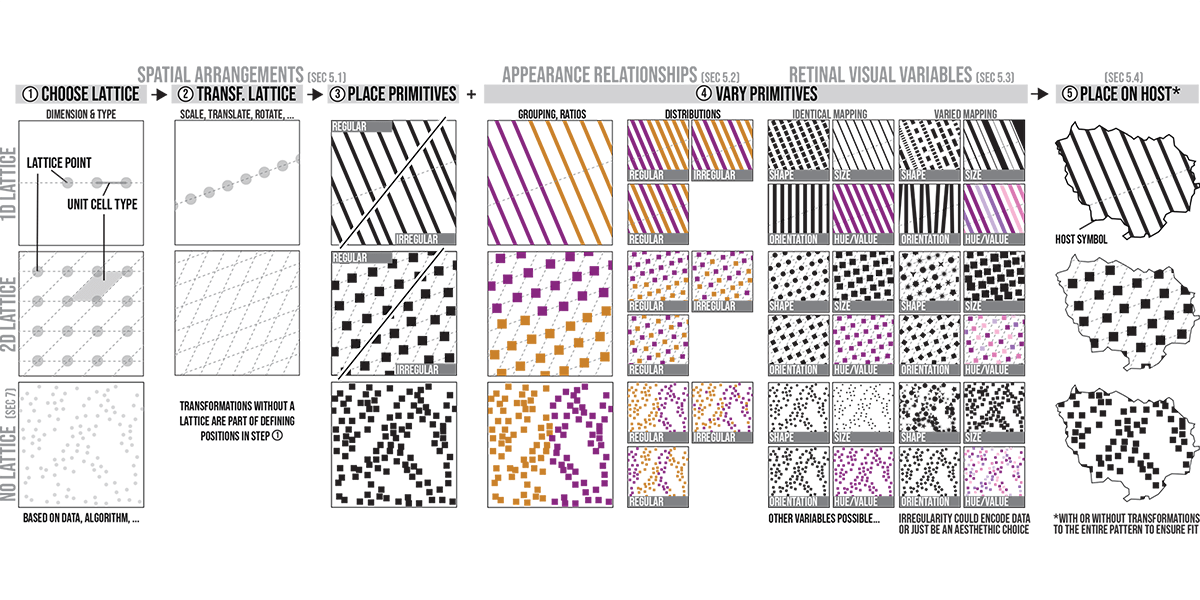
Abstract
We present a new comprehensive theory for explaining, exploring, and using pattern as a visual variable in visualization. Although patterns have long been used for data encoding and continue to be valuable today, their conceptual foundations are precarious: the concepts and terminology used across the research literature and in practice are inconsistent, making it challenging to use patterns effectively and to conduct research to inform their use. To address this problem, we conduct a comprehensive cross-disciplinary literature review that clarifies ambiguities around the use of "pattern" and "texture". As a result, we offer a new consistent treatment of pattern as a composite visual variable composed of structured groups of graphic primitives that can serve as marks for encoding data individually and collectively. This new and widely applicable formulation opens a sizable design space for the visual variable pattern, which we formalize as a new system comprising three sets of variables: the spatial arrangement of primitives, the appearance relationships among primitives, and the retinal visual variables that characterize individual primitives. We show how our pattern system relates to existing visualization theory and highlight opportunities for visualization design. We further explore patterns based on complex spatial arrangements, demonstrating explanatory power and connecting our conceptualization to broader theory on maps and cartography. An author version and additional materials are available on OSF: osf.io/z7ae2.Citation
Tingying He,
Jason Dykes,
Petra Isenberg,
Tobias Isenberg
Reframing Pattern: A Comprehensive Approach to a Composite Visual Variable
IEEE Transactions on Visualization and Computer Graphics (VIS), 32: 2026.
BibTeX
@article{2025_vis_reframing-pattern,
title = {Reframing Pattern: A Comprehensive Approach to a Composite Visual Variable},
author = {Tingying He and Jason Dykes and Petra Isenberg and Tobias Isenberg},
journal = {IEEE Transactions on Visualization and Computer Graphics (VIS)},
volume = {32},
month = {jan},
year = {2026}
}
Acknowledgements
We thank all members of the Aviz team and the University of Utah’s SCI Institute for their insightful input throughout this theory-building process, especially A.-F. Cabouat, F. Cabric, C. Han, and Y. Lu.